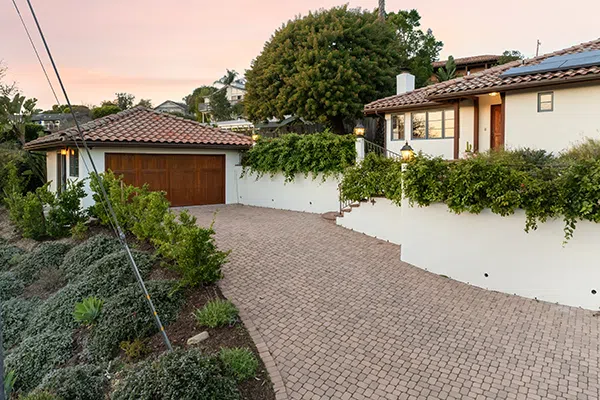You’re not alone if you’ve noticed cracks or wear in your concrete driveway. Many homeowners face similar issues, but the good news is that various repair options are available.
From simple patching techniques to more extensive resurfacing solutions, understanding what’s best for your driveway can save you time and money. But how do you know which method is right for your specific situation?
Let’s explore the different options you have at your disposal.
Patching Techniques for Minor Cracks and Damage
Patching minor cracks and damage involves cleaning the surface, applying the appropriate filler, and smoothing it for a seamless finish.
Preparing the Surface
Proper preparation ensures your patch adheres well and lasts longer. Start by thoroughly cleaning the area.
- Remove dirt, debris, and loose concrete
- Use a wire brush or pressure washer if needed
- Allow the area to dry completely
Choosing the Right Patch Material
Different types of cracks call for different patching products. Select the one that suits your repair needs.
- Use crack filler for narrow, surface-level cracks
- Opt for a patching compound for deeper or wider damage
- Consider a concrete resurfacer for larger, shallow areas
Application and Finishing
Once the area is prepped and the material is chosen, apply the patch carefully and finish it properly.
- Fill the crack or damaged spot completely
- Smooth the surface with a trowel for a seamless look
- Follow the curing times per the manufacturer’s instructions
With proper technique and materials, small cracks can be patched effectively and prevent future deterioration.
Resurfacing Solutions for Worn-Out Driveways
Resurfacing is an effective solution for restoring worn-out driveways. It involves applying a new layer of concrete or resurfacing compound over the existing surface.
When to Choose Resurfacing
Resurfacing is ideal for driveways with cosmetic issues rather than deep structural damage.
- Fixes surface cracks, discoloration, and minor pitting
- Enhances appearance without complete replacement
- Saves time and money compared to new concrete
Preparing the Driveway
Proper prep work is essential to ensure a smooth, long-lasting finish.
- Clean thoroughly to remove oil, dirt, and debris
- Repair larger cracks with patching material
- Allow the surface to dry completely before applying the resurfacer
Applying the Resurfacing Compound
The resurfacing layer creates a clean, uniform finish and improves durability.
- Pour and spread an even layer using a squeegee or trowel
- Add texture or slip resistance if desired
- Follow the curing times for optimal results
Resurfacing not only extends the life of your driveway but also boosts curb appeal with minimal disruption and cost.
Full Replacement: When to Consider a Complete Overhaul
A full replacement is necessary when a driveway has extensive damage, such as deep cracks or sinking, that resurfacing cannot fix.
Signs It’s Time for a Full Replacement
A complete driveway overhaul may be necessary when the damage goes beyond surface-level.
- Deep cracks that affect the foundation
- Significant sinking or large, crumbling sections
- Frequent repairs that are no longer cost-effective
Structural Issues and Curb Appeal
Severe damage often indicates structural issues that resurfacing can’t fix. A new driveway may also boost your home’s value.
- Uneven surfaces that affect drainage and safety
- Plan to enhance your home’s exterior appeal
- Long-term investment for durability and functionality
The Long-Term Benefits
A complete replacement guarantees a stable, durable surface that requires fewer repairs and offers lasting value. It provides a smooth finish, ensuring the driveway can withstand weather and heavy traffic.
Additionally, it eliminates the need for ongoing maintenance, offering peace of mind for years to come. When resurfacing isn’t enough, opting for a complete replacement ensures a long-lasting, reliable driveway that stands the test of time.

